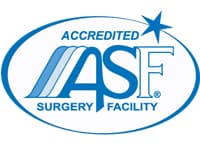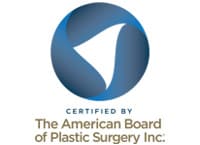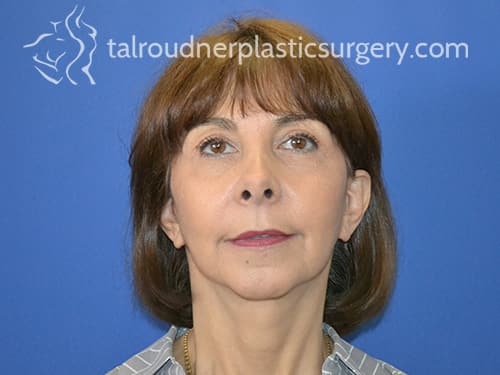As we age, we lose elasticity and it’s common for wrinkles to appear on the facial skin, particularly on the forehead, around the eyes, at the brow line, between the bottom of the nose, and around the mouth. In addition, the jaw begins to drop and may eventually create the jowls and pre-jowl sulcus. Folds of loose skin can also begin forming on the lower face and neck. Facial rejuvenation surgery, like a facelift, can dramatically improve these signs of facial aging.
Dr. Tal Roudner in Miami is a specialist in facelift surgery and is a Board-Certified Plastic Surgeon. Call our Miami office today at 305-767-7719 to schedule your facelift consultation with Dr. Roudner.
What Is Facelift Surgery?
A facelift, also known as rhytidectomy, is a cosmetic surgery procedure designed to correct signs of aging and restore youthful facial features. It commonly involves the re-structuring and re-positioning of the underlying tissues as well as re-draping and removal of excess skin from the face and the neck.
Benefits of Facelift Surgery
A facelift can reverse the aging process and make your face look younger. After having a facelift, many of Dr. Tal Roudner’s Miami patients find that they feel more confident and have less anxiety about growing older. Other benefits of facelift surgery include:
- Lifts and tightens facial tissues including loose or sagging facial skin
- Redistributes and tightens underlying muscles
- Improves chin and neck contours
- Restores a more youthful facial appearance
Facelift Consultation
Prior to your procedure, you will meet with Dr. Roudner in our Miami practice for a consultation to discuss your cosmetic goals and expectations for surgery. Pictures will be taken, and Dr. Roudner will discuss the facelift process with you fully as well as provide instructions for before and after the procedure. You will need to provide your medical history, and a full list of your current medications, including any vitamins and supplements you may be taking, and you may be required to have certain lab tests done. Depending on your needs, your facelift may be performed in our Miami clinic or at one of the nearby hospitals.
Facelift Techniques
Facelift surgery techniques vary according to the surgeons performing the procedure, as well as the patients and their degree of skin laxity.
The main categories for facelift surgery are:
- Deep plane facelift
- Traditional facelift
- Limited incision facelift or mini facelift
- Neck lift
A deep plane facelift is a type of facial rejuvenation surgery that targets the deeper layers of the face to lift and tighten the skin, muscles, and tissues. Unlike a traditional facelift, which only addresses the skin and superficial tissues, a deep plane facelift addresses the underlying structures of the face to create a more natural and long-lasting result. The procedure is typically performed under general anesthesia and involves making incisions in the hairline and around the ears. The skin is separated from the underlying muscles and tissues and repositioned to lift and tighten the face.
Traditional facelift incisions begin either at the sideburns or within the temple hairline and continue around the ear lobe along the posterior portion of the ear and to the posterior hairline of the scalp.
During the surgery, underlying tissues and fat are redistributed and lifted on the face, the jowls, and the neck. The remaining skin is redraped and excess skin is removed. An additional submental incision may be required to tighten the neck. Sutures or skin adhesives are used to close the incisions.
Preparing For Facelift Surgery
The preparation for facelift surgery is quite similar to other elective surgical procedures and may require a visit to your primary care doctor for medical clearance, especially for patients with chronic medical conditions such as high blood pressure or diabetes. Patients undergoing facelift surgery are seen in the office at the time of consultation and four weeks prior to surgery for a pre-operative appointment. At the pre-op appointment, photos are taken, necessary blood work and other tests are performed, consents are reviewed and signed and medical clearance is obtained as necessary.
Certain medications (aspirin, ibuprofen, etc), supplements, and herbs can cause bleeding problems during the surgery and post-surgery. Patients will receive a comprehensive list of what to avoid for several weeks before the procedure at the time of the consultation. It is important to eat a healthy diet and avoid drinking alcohol for at least 48 hours prior to the procedure. Responsibilities at home and at work should be taken care of prior to surgery in order to have a worry-free and relaxing recovery. Prescription medications can be filled at the time of surgery by the person accompanying the patient to surgery or in advance prior to the day of surgery.
The Facelift Procedure
During a traditional facelift procedure, the skin on the face is tightened and repositioned so it lies smoothly over the face.
Facelift surgery is typically an outpatient cosmetic procedure and may be done using either IV sedation or general anesthesia. Dr. Roudner will discuss these options with you during your consultation and recommend the best choice for you depending on your needs and comfort level.
Once you are sedated, Dr. Roudner will begin your facelift by making the incision. The location and size of this incision will depend on which type of facelift you are getting. If you are getting a traditional facelift, your incision will begin in your hairline and go down around your ears. The tissue and fat under your skin may be resculpted or repositioned, and your muscles may also be lifted and repositioned in the deep plane of the SMAS (superficial musculoaponeurotic system). Your skin will then be redraped over your new contours, and Dr. Roudner will trim away any excess skin. If necessary, a second incision may be done under your chin in order to resculpt your neck and jawline. Your incisions will then be closed with sutures.
In a limited incision facelift, also known as a mini facelift, your incision will start in your temple, run along the front of the ear and go under the lobe. If you are getting a neck lift, the incision will begin in front of your ear. These surgeries are used to correct less severe signs of aging.
The incisions are carefully placed so that once they are healed, they will be well-hidden in the hairline and along your natural facial contours, which will render them practically invisible.
Facelift Recovery
After your facelift, swelling and bruising are normal. Your face will likely be bandaged to help your incisions heal and prevent infection, and you may require a small drain that will prevent fluid from collecting under the skin.

Dr. Roudner will provide you with prescriptions for pain medications, which can be filled in any Miami pharmacy. He will also go over specific instructions that will detail your follow-up appointments and when you may return to regular activity.
Patients should plan to have 7 to 10 days of recovery time with complete bed rest on the day of surgery except for getting up to the restroom. The day after surgery the patient should be out of bed and gradually mobilizing at home without any strenuous activity. Significant swelling and bruising may last three to four weeks and patients should plan accordingly. Gradual light exercise may be started on the 4th week after surgery with full activity at six weeks after the surgery. For the best facelift results, follow Dr. Roudner’s instructions carefully, and don’t try to rush your healing.
Frequently Asked Questions About Facelift Surgery
What anesthesia is used during facelift surgery?
The procedure is commonly performed under general anesthesia in some cases twilight sedation (when the person is sedated but not unconscious) with local anesthesia may be performed.
How long does facelift surgery take?
The facelift procedure should take between three to five hours depending on the complexity of the case, the surgeon and the technique used.
Who is a good candidate for facelift surgery?
Facelift surgery is a good option for patients that are physically healthy, do not smoke, and have realistic expectations and a positive outlook about the improvement of their appearance.2
Can a facelift improve skin damage?
A facelift is unable to reverse skin damage caused by the sun. A facelift cannot remove every wrinkle around the lips, eyes, or below the nose. However, other treatments and procedures such as skin resurfacing can address these issues. Some of these can be performed at the same time you get your facelift in Miami.
Can I combine any other procedures with facelift surgery?
Facelift procedures can be complemented with other surgical procedures such as brow lift, eyelid surgery (blepharoplasty), and rhinoplasty. Non-surgical rejuvenating procedures such as dermal fillers, neuromodulators like Botox, laser, and skin tightening procedures are commonly added either before or after facelift surgery to address aging changes not treated by the surgery.
Does facelift surgery have any risks?
Any surgery has risks and possible complications. When deciding if to undergo a facelift procedure the benefits to achieve the desired goals should be weighed against the possible risks and complications. Serious complications after facelift surgery are rare but may include: Post-surgical bleeding (hematoma), infection, seroma (fluid accumulation), facial nerve injury with weakness, skin loss, anesthesia risks, deep vein thrombosis, and cardiac and pulmonary complications.3 Other less severe complications: Asymmetry, unfavorable scarring, poor wound healing, hair loss at the incisions, numbness or other changes in skin sensation, fat necrosis, pain, which may persist, skin discoloration, sensitivity or swelling, skin contour irregularities, sutures may spontaneously surface through the skin and possibility of revisional surgery.
Schedule A Consultation For Facelift
If you have concerns about deep facial wrinkles, creases, and sagging, facelift surgery may be right for you. Dr. Tal Roudner is a plastic and reconstructive surgeon with extensive experience in rhytidectomy procedures to restore a more youthful appearance. Contact us today to schedule a consultation for facelift surgery.
1 Mayo Clinic. Face-lift. Available: https://www.mayoclinic.org/tests-procedures/face-lift/about/pac-20394059. Accessed November 2, 2022.
2ASPS. Who is a good candidate for facelift surgery? Available: https://www.plasticsurgery.org/cosmetic-procedures/facelift/candidates. Accessed November 2, 2022.
3ASPS. What are the risks of facelift surgery? Available: https://www.plasticsurgery.org/cosmetic-procedures/facelift/safety. Accessed November 2, 2022.












Request a Consultation
Call 305-767-7719 or Use the Form Below to Schedule Online!
Dr. Tal Roudner has either authored or reviewed and approved the content on this website.
Page Updated:


